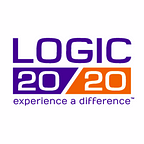High tNPS and customer service
Article by: Lionel Bodin & Alexis Greenwood
“Based on your recent experience, how likely are you to recommend Acme to a friend on a scale from 0 to 10?”
This is the million-dollar question — literally! A customer’s answer to this question contributes to a company’s overall transactional net promoter score (tNPS), a metric that reveals the likelihood that customers will recommend that company’s product or service to others. In other words, do they like you? Really like you?
A positive tNPS score equates to a high percentage of customers who are promoters — those willing to buy more product, recommend to friends, evangelize on social media, etc. Promoters boost business, correlating a higher tNPS score to higher profits.
What is tNPS?
The Net Promoter Score (NPS) is a widely accepted metric for determining customers’ willingness to recommend an organization to others — in other words, to become a “promoter.” A transactional net promoter score, or tNPS, is a type of NPS that focuses on the customer’s sentiments regarding a specific transaction. (This is different from a relational net promoter score, which assesses the overall strength of the business’ relationship with the customer.) If your organization sends follow-up surveys asking customers for feedback based on a recent experience, the results contribute to your tNPS score.
tNPS and customer care
In the world of customer care, tNPS provides an immediate glimpse into the performance of customer service interactions and is an effective way to monitor customer satisfaction. Customer satisfaction is influenced by many factors, including the issue, the customer’s feelings leading into the interaction, the outcome of the interaction, and the agent’s approach to and handling of the interaction. Solve the problem and satisfy the customer, with the ultimate goal of converting them into a brand “promoter.” Then, following the customer care interaction, ask the brief question for the tNPS survey: “Based on your experience, how likely are you, on a scale of 1–10, to tell your friends about us?”
When conducted across thousands of customer care interactions, this simple tNPS survey creates a rich source of quantitative data about customer sentiment. Asking the question may be simple, but converting customers to “promoter” status is definitely not an easy task.
What is considered a “good” or “bad” tNPS score?
The criteria for a “good” or “bad” tNPS score can vary widely across industries and geographic regions, so it’s important to do some research in advance. In general, a score below 0 indicates the business has serious issues to address; a score between 0 and 30 is usually regarded as good, but indicates some room for improvement. A score over 30 suggests the organization has more happy than unhappy customers, and if your score is over 70, you’re probably getting a steady stream of referrals. Again, these are highly generalized criteria, so interpreting your organization’s tNPS scores will depend heavily on the averages for your industry and region.
How to increase tNPS using messaging platforms
Typical customer service interactions are dreaded experiences for customers and usually involve pressing numbers and pound signs into an IVR phone system, being directed and redirected, repeating a problem to several agents in the hope that one will have the solution, and wasting way too much time. Using email to reach an agent and explain a problem? Forget about it.
However, in the digital age, preferred communication channels have changed, and leading companies have recognized that customer care communications need to change, too. The majority of consumers prefer communicating through messaging. In a recent survey, 30 percent of consumers said they would contact their company more frequently if texting were an option. If you are seeking happy customers and a positive tNPS score, follow the customer’s lead and invest in converting customer care to messaging platforms.
Messaging provides a platform for customer care that is frustration-free and gets customers to “How can I help you?” faster. This is achieved through a conversational user interface within websites, mobile apps, or even text services. In addition to greater customer satisfaction levels, conversational user interfaces unlock new automation use cases by pairing real-time machine learning and artificial intelligence to ensure a quick, seamless interaction with human or non-human agents.
Want to learn more about how messaging leads to happy customers and high tNPS? We share 5 ways in the full article here: https://www.logic2020.com/insight/want-a-high-transactional-net-promoter-score-for-customer-care?utm_source=medium&utm_medium=social&utm_campaign=insights_2021_02_02
